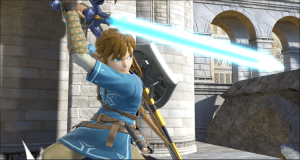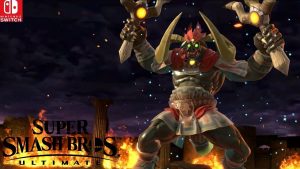Daily Debate: What is Your Favorite Tribute to Zelda Within the Super Smash Bros Series?
Posted on March 26 2024 by Jared Eubanks

Since the Super Smash Bros. series started back in 1999 on the N64, The Legend of Zelda has been an integral part of the games. In the subsequent installments on every Nintendo console generation since then (plus the 3DS handheld), additions of various forms paying tribute to The Legend of Zelda saga have been integrated to widen and deepen the experience of fans.
Super Smash Bros. Melee for the GameCube saw the inclusion of three more fighters with the combo character of Zelda/Sheik, Young Link, and Ganondorf. All of these reflected their looks from Ocarina of Time (which matched Majora’s Mask for Young Link). One of the most significant additions in Melee were trophies, which were the initial conception of what would later become amiibo, and Zelda boasted 30 of them with references to the early installments on the NES, SNES, Game Boy, and N64.
Super Smash Bros. Brawl for the Wii introduced Toon Link in his form from The Wind Waker plus the return of Zelda/Sheik and Ganondorf (Young Link unfortunately took a hiatus). Link, Zelda, and Ganondorf all shifted from their Ocarina of Time form to their Twilight Princess representation. Trophies made their return, and this time 47 from the Zelda series appeared, including additions from The Wind Waker and Twilight Princess. Stickers, which provided stat bonuses, and Masterpieces, which allowed for the playing of classic titles for a few minutes, made their debut.
My personal favorite addition to Brawl was the Adventure Mode Subspace Emissary which artfully wove together the fates of all the fighters in an epic journey to take down Tabuu. Custom levels in the theme of Nintendo’s core series are provided where characters team up in an arcade style brawler to work their way through hordes of enemies interspersed with cutscenes. Link in his Twilight Princess gear makes an appearance to draw the Master Sword from its pedestal in the forest while accompanied by a fairy, supposedly Navi, to head into battle with Yoshi as his brother in arms. While for the majority of the gameplay, traditional villains like Bowser and Ganondorf thwart their arch nemeses Mario and Link, respectively, the story of Subspace Emissary provides for the brief redemption of Ganondorf thanks to his rescue from trophy form by Link and Zelda in one of the cutscenes. In the final battle, the three bearers of the Triforce, along with all the other fighters, join together for a moment to fight against the common greater threat of Tabuu. If only those three could do that more often!
Super Smash Bros. 4 (SSB4) for the Wii U and 3DS don’t add any new fighters from Brawl, but they do separate Zelda and Sheik into two distinct fighters. Assist trophies (Tingle, Skull Kid, Midna, and Ghirahim) make their initial appearance to fight alongside you. The new Mii Sword Fighter also had a Link outfit with the iconic green tunic. Smash Tour, which was exclusive to the Wii U version, had four Zelda items and characters to join you for the board game-like adventure. Smash Run, which was exclusive to the 3DS version, included seven traditional enemies from Zelda in its platforming adventure. Trophies returned with even more this time, totaling 84 and including new ones celebrating Skyward Sword.
Super Smash Bros. Ultimate certainly lived up to its name as every fighter from previous versions returned (Young Link is back!) plus almost every stage. Spirits were the big addition in Ultimate with various kinds including Primary Spirits, Support Spirits, Master Spirits, and Fighter Spirits. The list is almost too long to count, but they provide various combinations to boost stats, provide additional abilities, or negate environmental hazards. Most notably in Ultimate, Link appears brandishing his blue tunic from Breath of the Wild as his default form (although his traditional array of tunics are only a button press away). Zelda changes looks into a combination of her A Link to the Past and A Link Between Worlds dress. Ganondorf harkens back to his Ocarina of Time form. Sheik also gets a slight tweak with the influence of the stealth armor set from Breath of the Wild, even though she doesn’t appear in that game.
My favorite part of Ultimate was the Sacred Land, which was part of the Adventure Mode, and it culminates in a boss battle with Ganon. The Sacred Land is shaped like a Triforce, and owl statues provide hints as players move between spirit battles. The Triforce of Courage section calls back to the Lost Woods in Ocarina of Time. The Triforce of Wisdom section references Kakariko Village in Breath of the Wild, and its torch puzzle with the clock is a memorable moment. It showed Sakurai and his team’s clever attention to detail and respect for the series. The Triforce of Power section is meant to evoke the player’s memory of the Gerudo Desert and the Gerudo Fortress from Ocarina of Time.
What was your favorite version of Smash in terms of how it celebrated Zelda and in what specific way? Was it a fighter or stage that was a core gameplay element? Were you committed to grinding out hours of Smash to get every last collectible alluding to Zelda? Was it an Adventure Mode where the development team created a melded Zelda world for you to explore? Tell us below in the comments.
(Special thanks to the fantastic resource of SmashWiki where I researched much of this information. If you want to learn even more about Zelda within the Smash series, you can find out more at the link here.)

Jared Eubanks is a staff writer at Zelda Dungeon, and he is also a husband, father, and engineer. He is originally from the Atlanta, GA area and still lives there. He graduated from Georgia Tech and is a proud Yellow Jacket. He loves to play boardgames, build Lego, and read books with his family. He’s been gaming since childhood with the original NES and GameBoy, and he enjoys retro gaming, collecting, and modding consoles and handhelds. His favorite Zelda game is Breath of the Wild but is also fond of the older classic titles.






